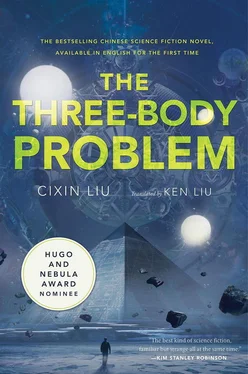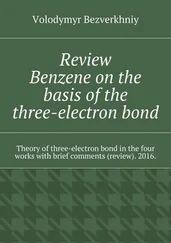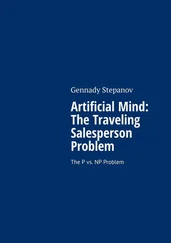Bitter cold followed. The completely reflective proton plane deflected all sunlight back into space. The temperature on Trisolaris dropped precipitously, reaching levels comparable to the appearance of three flying stars, which had ruined many cycles of civilization in the past. Most of the population of Trisolaris dehydrated and were stored. A deathly silence fell over much of the darkness-enclosed surface. In the sky, only the faint light spots from the beams that held up the proton membrane flickered. Occasionally, a few other tiny, sharp lights could be seen in synchronous orbit: the spaceships etching circuits into the gigantic membrane.
The principles governing micro-scale integrated circuits were completely different from those of conventional circuits, as the base material wasn’t made of atoms, but matter from a single proton. The “p-n junctions” of the circuits were formed by twisting the strong nuclear forces locally on the surface of the proton plane, and the conducting lines were made of mesons that could transmit the nuclear force. Because the surface area for the circuit was extremely large, the circuits were also very large. The circuit lines were as thick as hairs, and an observer close enough could see them with the naked eye. Flying close to the proton membrane, it could be seen as a vast plane made of complex, elaborate integrated circuits. The total area covered by the circuits was dozens of times the area of the continents on Trisolaris.
Etching the proton circuits was a huge engineering feat, and thousands of spaceships worked for more than fifteen thousand Trisolaran hours to complete it. The software debugging process took another five thousand Trisolaran hours. But finally, it was time to test the sophon for the first time.
The big screen at the sophon control center deep underground showed the progress of the long self-test sequence. Next came the loading of the operating system. Finally, the blank blue screen showed a line of large-font text: Micro-Intelligence 2.10 loaded. Sophon One ready to accept commands.
The science consul said, “A sophon has been born. We have endowed a proton with wisdom. This is the smallest artificial intelligence that we can make.”
“But right now, it appears as the largest artificial intelligence,” said the princeps.
“As soon as we increase the dimensionality of this proton, it will become very small.”
The science consul entered a query at the terminal:
>Sophon One, are the spatial dimensionality controls operational?
Affirmative. Sophon One is capable of initiating spatial dimensionality adjustments at any moment.
>Adjust dimensionality to three.
After this command was issued, the two-dimensional proton membrane that had wrapped itself around Trisolaris began to shrink rapidly, as though a giant’s hand was pulling away a curtain over the world. In a moment, sunlight bathed the ground. The proton folded from two dimensions into three and became a gargantuan sphere in synchronous orbit, about the size of the giant moon. The sophon was over the dark side of the planet, but the sunlight reflected from its mirror surface turned the night into day. The surface of Trisolaris was still extremely cold, so the crowd inside the control center could only observe these changes through a screen.
Dimensionality adjustment successful. Sophon One is ready to accept commands.
>Adjust dimensionality to four.
In space, the gargantuan sphere shrank until it eventually looked to be the size of a flying star. Night again descended over this side of the planet.
“Princeps, the sphere we see now is not the complete sophon. It’s only the projection of the sophon’s body into three-dimensional space. It is, in fact, a giant in four-space, and our world is like a thin, three-dimensional sheet of paper. The giant stands on this sheet of paper, and we can only see the trace where its feet touch the paper.”
Dimensionality adjustment successful. Sophon One is ready to accept commands.
>Adjust dimensionality to six.
The sphere in the sky disappeared.
“How big is a six-dimensional proton?” the princeps asked.
“About fifty centimeters in radius,” the science consul replied.
Dimensionality adjustment successful. Sophon One is ready to accept commands.
>Sophon One, can you see us?
Yes. I can see the control center, everyone inside, and the organs inside everyone, even the organs inside your organs.
“What is it saying?” The princeps was stunned.
“A sophon observing three-space from six-space is akin to us looking at a picture on a two-dimensional plane. Of course it can see inside us.”
>Sophon One, enter the control center.
“Can it go through the ground?” the princeps asked.
“It’s not exactly going ‘through.’ Rather, it’s entering from a higher dimension. It can enter any enclosed space within our world. This is again similar to the relationship between us, existing in three-space, and a two-dimensional plane. We can easily enter any circle drawn on the plane by coming in from above. But no two-dimensional creature on the plane can do such a thing without breaking the circle.”
Just as the science consul finished, a mirror-surfaced sphere appeared in the middle of the control center, floating in air. The princeps walked over and gazed at his own distorted reflection. “This is a proton?” He was amazed.
“This is the six-dimensional body of the proton projected into three-space.”
The princeps extended a hand. When he saw that the science consul did not object, he touched the surface of the sophon. A very light touch pushed the sophon a considerable distance.
“It’s very smooth. Even though it has only the mass of a proton, I could feel some resistance against my hand.” The princeps was puzzled.
“That’s due to air resistance against the surface of the sphere.”
“Can you increase its dimensionality to eleven, and make it as small as a regular proton?”
As soon as the princeps said this, the science consul shouted to the sophon, his voice tinged with fear, “Attention! This is not a command!”
Sophon One understands.
“Princeps, if we increased the dimensionality to eleven, we would lose it forever. When the sophon shrinks to the size of a regular subatomic particle, the internal sensors and I/O ports will be smaller than the wavelength of any electromagnetic radiation. That means it would not be able to sense the macro world, and would not be able to receive our commands.”
“But we must eventually make it shrink back to a subatomic particle.”
“Yes, but that must await the completion of Sophon Two, Sophon Three, and Sophon Four. Multiple sophons may be able to form a system to sense the macro world through quantum effects. For example, suppose a nucleus has two protons. The two of them will interact and follow certain patterns of motion. Take spin: Maybe the direction of spin of the two protons must be opposite from each other. When these two protons are taken out of the nucleus, no matter how far apart they are, this pattern will remain in effect. When both protons are made into sophons, they will, based on this effect, create a mutual-sensing system. More sophons can then form a mutual-sensing formation. This formation’s scale can be adjusted to any size, and can thus receive electromagnetic waves to sense the macro world at any frequency. Of course, the actual quantum effects necessary to create such a sophon formation are very complicated. My explanation is only an analogy.”
* * *
The unfolding of the next three protons into two dimensions succeeded on the first try. The construction of each sophon also took only half as long as Sophon One. After the construction of Sophon Two, Sophon Three, and Sophon Four, the quantum sensing formation was also created successfully.
Читать дальше












